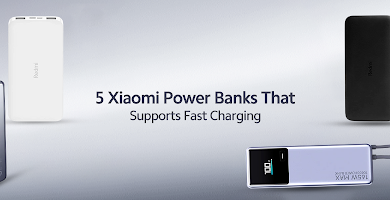Personalization vs. Privacy: Balancing User Data in Mobile App Development

In the fast-expanding digital landscape, mobile app developers are facing a deep challenge – how to deliver personalized user experiences without risking privacy.
The modern-day apps are anticipating the requirements, offering relevant content, and processing interactions flawlessly – all of it is done through data collection and tracking of user behavior.
However, rising tensions like data misuse, security leaks, and invasive tracking has made privacy a top concern for businesses & individuals.
Today, finding the right balance between privacy and personalization is not optional anymore; it’s a necessity for securing user trust and boosting long-term app glory.
This blog explains how mobile app developers can swiftly navigate this tightrope – leveraging data to enhance user experience while complying with regulations like CCPA and GDPR.
Let us now delve into the best practices and emerging technologies adopted by the developers to build smart apps.
The Growth of Personalization in Applications
Let us first explain “why.” The reason is simple – personalization enhances participation. Numerous studies have proven that tailored experiences help in improved retention, satisfaction, and even conversion rates.
There is personalization derived from carefully planned notifications — advertisements based on movements, push notifications, and even recommendations that adjust to preferences over time.
This is especially visible in the OTT space, where platforms are leveraging OTT app development services to build smarter recommendation engines, personalized content feeds, and adaptive streaming experiences based on viewing behavior and preferences. Today, with support of these advanced solutions, platforms are pushing their growth targets and meeting their potential to new heights.
The mobile applications make use of different types of data for tailoring experiences include –
- Click Behavior (Clicks, actions, and active time per session)
- Usage demographic language or modern (age and gender)
- Social media usage Platforms
- Location data
When used responsibly, this data can help improve intuition user experience. The data should, however, be balanced with the user having maximum guidance regarding feeling watched. But tension emerges.
See also: Provider Enrollment And Its Role In Healthcare Compliance
The Data Privacy Inflection Point
This event stems from heightened concern over data collection and storage methods, and even usage.
Users have reached a tipping point after undergoing information overload, and due to different data breaches, they’re exercising control which demands full transparency regarding the security offered around confidential data.
The European GDPR and California’s CCPA with other regional data protection acts require user data to be handled with extreme care. They focus on:
- Consent – Collection of data requires affirmative action from the users.
- Transparency – The intention of data collection should be explicitly disclaimed.
- Right to be forgotten – Users have the ability to revoke the availability of their information.
- Data minimization – Obtaining only information that is unavoidably vital.
Balancing Personal Approach and Privacy
One cannot simply personalize something and ignore privacy, nor overlook personalization when focusing on privacy, neither does it work choosing one range over another. Both aspects should be equally prioritized and blend in together to solve the issue creatively.
- Personalization that Respects Privacy
This is a term that stands out and helps to achieve optimal relevance without overstepping boundaries.
How?
- Processing on the Device Level: Apps can process more sensitive user information. Personal details do not have to be sent offshore for processing, for example, Apple has been recognized with their attempts to ensure machine learning works with iOS in a personalized manner without data leaks.
- Data retention: Enabling a model to train on the user’s data from the device, ensures the data is kept on the device. Although redundant, Google has used this approach in their Gboard keyboard app.
- Edge Computing: Easier transmission and lower risks concerning data exfiltration make this easier. Data does not have to be transferred to a single server, instead they can be divided into sections making this a more distributed means of processing data.
- Data Sourced from Users
Asking users for information upfront is better than collecting it passively.
Zero-party data is the information offered by a user willingly and actively — for instance, when they complete a preferences form during onboarding. This certainly places power back into the hands of users, and in many cases proactively shared data leads to better results than behavioral data.
- Specific Permissions
Instead of using one-click access that is too overreaching, allow users to select when they want to share specific information. For instance, a weather app can request constant location access, but could instead ask for it only when the user is checking a forecast.
This has been the approach taken with new OS updates (primarily iOS). Phrases such as, “Allow Once,” “Only While Using the App,” or permission dashboards help users control themselves are now commonplace.
4. Transparency as a Design Feature
- Microcopy clarity: Use plain language to explain why data is needed (“We use your location to find events near you.”)
- Interactive consent flows: Rather than bombarding users with all permissions at once, reveal them contextually when needed.
- Visual data control: Dashboards where users can see and modify what the app knows about them builds trust and shows respect.
Trust is the Ultimate Currency
In the personalization vs. privacy debate, trust is the bridge. Users who trust an app are more likely to share data — but that trust must be earned, not assumed.
Tips to Build and Maintain Trust –
- Never collect more than needed
- Give users the option to opt-out
- Make opting-out frictionless
- Be responsive to data requests and deletion
- Be honest about third-party data sharing
Daring to Innovate While Anonymizing
Here is something we haven’t thought about in depth – can we truly personalize while keeping anonymity intact? Instead of keeping exact traces of your actions, the app can either create generalized behavioral profiles, or describe data processing techniques such as homomorphic encryption that allows computations on encrypted data without the need of decrypting it.
As we move towards even more immersive AR and VR experiences, wearable technology and brain-computer interfaces, the amount of data collected, as well as the intimacy will rise to an obscene level. The discussion around personalization vs privacy is bound to escalate.
That is why developers need to –
- Act with more foresight in the design process
- Ethically reevaluate the implementation of guardrails
- Approach the politics of compliance and empathy
Summing Up!
The evolution of mobile application innovations does not solely rely on technology advancement — it’s reliant on technology empathy. Does your application provide interaction without breaking the privacy bubble? Is it possible to create awe without causing disturbance? Businesses that leverage digital transformation services must build for trust, not just for traction.
Personalization should feel empowering, not intrusive. Privacy must be a feature, not an afterthought. The future of app development lies in striking this delicate, yet powerful balance.




